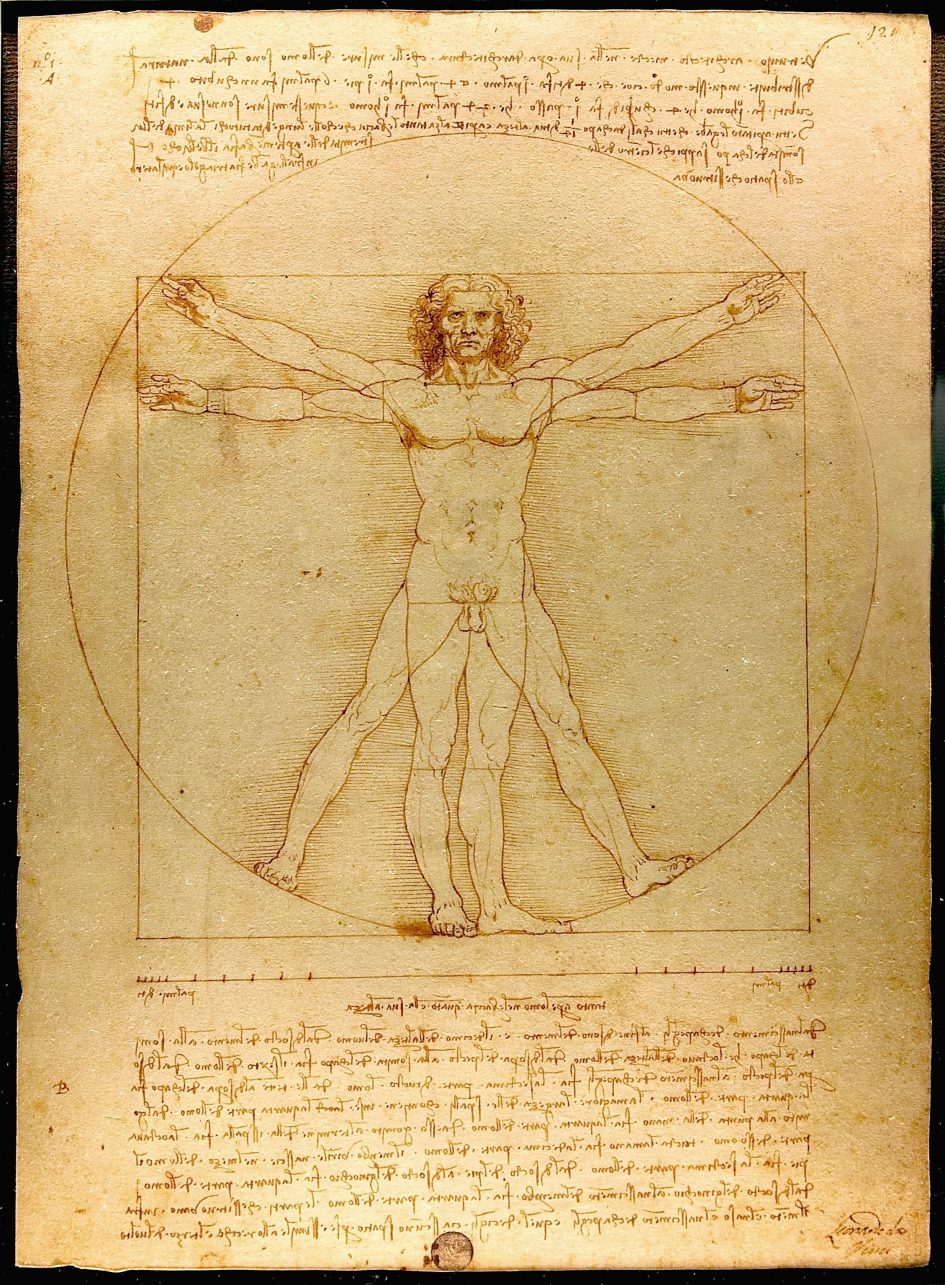1.4 Perspective and Humanism in the Italian Renaissance
Humanism
One of the most significant cultural shifts of the Renaissance was the rise of humanism. Many humanist ideas were around in earlier periods, especially classical Greece and ancient Rome, but the return of humanist thinking to a Europe that had been thoroughly Christianized led to a radical cultural shift. We saw some of these issues come up with Brunelleschi’s look to Roman architecture, Donatello’s recovery of the male nude, and the patronage of the Medici. This class we will look closer at how humanism radically shifted the way people saw themselves in relationship to the world.
In the Middle Ages, humans were seen as beneath God and the angels. Human life was filled with pain, struggle, dirt, and tied to the Earth. The goal for medieval Christians was to attain divinity in the afterlife–a moment when the soul is freed from the material body. Humanism takes an entirely different view of our earthly lives and our flesh and bones.
Pico della Mirandola’s (1462-1494) Oration on the Dignity of Man is arguably one of the most well-known Renaissance philosophical texts, remapping the medieval world view to instead focus on the human subject and its infinite potential. Below is a link to selections of it. The entire book (which is relatively short) is also linked on that page. Read the excerpts closely, attempting to decode Pico’s language and locating key ideas.
Primary Source: Pico’s Oration on the Dignity of Man (excerpts)
- What are the ways that Pico discusses the dignity of man? What is the relationship between human beings and divine beings?
- How is Pico’s notion of man radically different than a medieval view?
- What do you make of the language of this text? How is this written and who do you think it was written for?
Linear Perspective
The development of linear perspective is often cited as one of the most significant contributions of Italian Renaissance painting. We have already seen attempts at recreating three-dimensional space in earlier art, but linear perspective abstracts space into a mathematical system. Though perspective revolutionized painting, it was actually developed by an architect.
Smarthistory: Brunelleschi’s Linear Perspective
One of the first painters to incorporate Brunelleschi’s theories into painting was Masaccio (1401-1428), particularly in his fresco Holy Trinity.
Smarthistory: Masaccio, Holy Trinity
How does Masaccio use perspective to treat divine and human spaces? What does this painting suggest about humanism within the context of Renaissance European culture?
The High Renaissance
Leonardo Da Vinci (1452-1519), one of the most famous painters of the Renaissance and in all of western art, continues the Early Renaissance interest in anatomy and perspective while also developing a visual language for representing divine figures in a humanist age. Works like his Vitruvian Man (featured at the top of this page) signal a shift into what we call the “High Renaissance,” which spanned roughly from 1490 to the Sack of Rome in 1527.
Da Vinci also was one of many Italian artists of the High Renaissance who started working with oil paint. Like the 15th century painters in the Low Countries, Italian artists favored the medium’s vibrant colors and long drying time, meaning they could layer and rework portions of the painting for days. Da Vinci’s skill in oil can be seen in iconic paintings like Mona Lisa and Virgin of the Rocks, yet his desire to create an experimental medium of oil and fresco was disastrous in The Last Supper.
National Gallery of Art: Leonardo Da Vinci, The Virgin of the Rocks
Smarthistory: Leonardo Da Vinci, Last Supper
Consider Da Vinci’s Last Supper’s use of perspective in The Last Supper. How is this a decidedly humanist representation of this biblical theme? What strategies does he use both iconographically and formally?
Summary Questions:
What is humanism and why was it so important to the Renaissance?
How did linear perspective change painting?
In what ways can you see the connection between linear perspective and humanist ideas?
Outline for Class Notes
